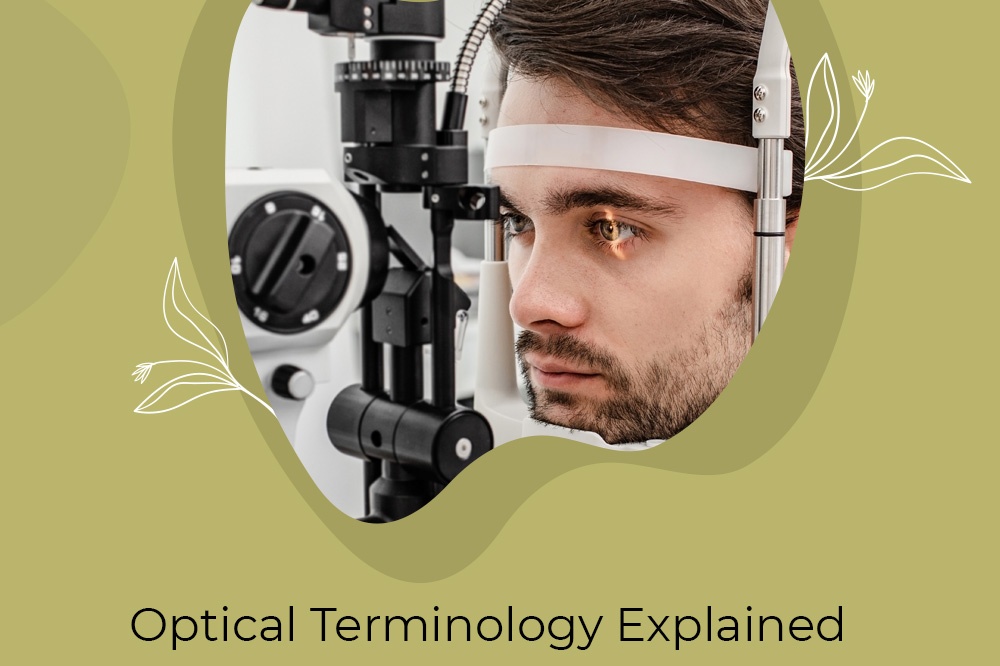Optical Terminology Explained

Every industry has its own language and terms. These words and phrases can be confusing to anyone who is not part of the daily operations of a specific sector, and the optician business is no exception.
To help you understand the terms, acronyms, and phrases regularly used when dealing with an optician, Penticton Optical has created this handy reference guide. Here, you’ll find valuable information allowing you to comprehend and communicate your eyecare needs effectively.
Myopia: Myopia or nearsightedness is a common problem where you can see things near you quite clearly, but as the distance increases from your vision, it gets blurry. In eyewear, a high myope’s eyes typically look tiny, and their lenses are pretty thick on the edges of the lens.
Hyperopia: Is also called farsightedness, which means you can see objects at a greater distance away from you, better than seeing them when they are closer to you. In eyewear, the eyes look magnified or more prominent due to the thickness of the center of the lens.
Presbyopia: An ocular condition that typically affects those past forty. The eyes no longer can focus up close like they used to. These people tend to hold their reading material at arm’s length and squint to see their print.
Astigmatism: An imperfection in the eye’s curvature that causes blurry vision both at a distance and near objects. It occurs when either the front surface of the eye (cornea) or the lens inside the eye has mismatched curves.
High index: A lens that has a higher index of refraction. A person with a higher prescription will utilize this product to alleviate the lens’s magnification (farsighted) or minification (nearsighted). A high index lens will reduce eyewear weight and provide better optics throughout the lens.
Pupillary Distance (PD): This measurement is the distance between your eyes. It is essential as your pupils must get matched with the lenses’ optical center. It is where the best optics are, based on your prescription.
Optic centre: The lens’s center where light passes through does not deviate. It’s where your pupillary distance measurement is important since the optic center must be right in front of your pupil to give you optimal vision.
Single vision: A single-powered lens designed to correct myopia, hyperopia, and astigmatism. The power is typically the same throughout the lens.
Bifocal: Two distinct optical powers in one lens. There is a line positioned at the lower lash that incorporates an additional ability to assist the wearer in reading (Presbyopic condition or prescribed for children who require assistance with focusing).
Tri-focal: It consists of three powers in one lens. There are two definitive lines within the lens. It provides views for long-distance, intermediate, and reading.
Progressive: Also referred to as multifocal lenses, these are no-line bifocals that incorporate multiple focal points within one lens. The top is for distance, the middle is for the computer or intermediate distance, and the bottom is for reading.
Tint and UV400: A tinted lens that blocks up to 400 nanometers of the electromagnetic spectrum. This lens blocks direct light from entering the eye.
Polarization: A laminated lens lined up to specifically block reflecting light. This lens blocks both direct light and reflecting light. For example, in a car, if there is anything on the dashboard, it will reflect on the windshield. A polarized lens will block that reflection. These lenses are popular with water enthusiasts and fishermen as this feature allows the wearer to see through the water.
Glass lenses: A lens material that is less common due to safety reasons. Very scratch-resistant, excellent clarity, but incredibly heavy and breaks into tiny fragments when they do break.
Plastic lenses: A safer alternative to glass, this lens will break into larger fragments under the same situation as glass, as it’s lighter in weight.
Polycarbonate: The safest lens available as it will only crack under the same stressors as glass and plastic. This lens gets used for most safety eyewear. It is a very lightweight lens and very soft material. These tend to scratch easily, but they have 100% UV protection in the lens.
Trivex: This lens has the tensile strength of poly but the visual acuity of plastic, meaning there are fewer color aberrations within the lens material. It is also more scratch-resistant than poly.
We hope these terms made you feel more confident on your next visit to the opticians. If you’re looking for licensed opticians in Penticton, BC, reach out to the experts at Penticton Optical. With many years of experience in the optical industry, we specialize in eye care, contact lenses, sunglasses, eyeglasses, and designer frames.
We offer our services across Penticton, Peachland, Summerland, Merritt, Princeton, Rock Creek, Beaverdell, Oliver, Greenwood, Grand Forks, and the surrounding areas. Please view our complete list of services here, or contact us here.